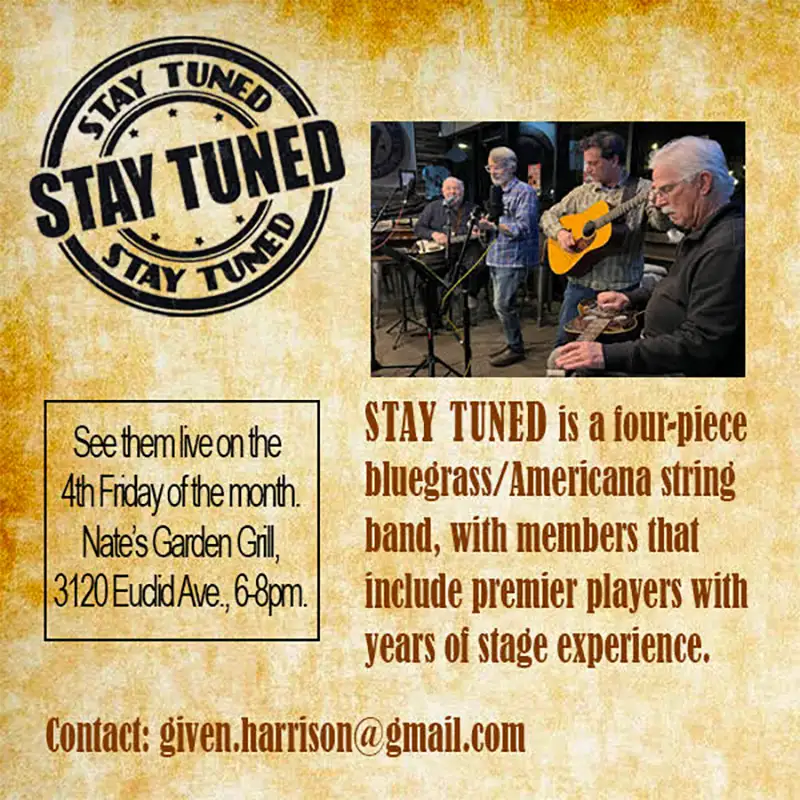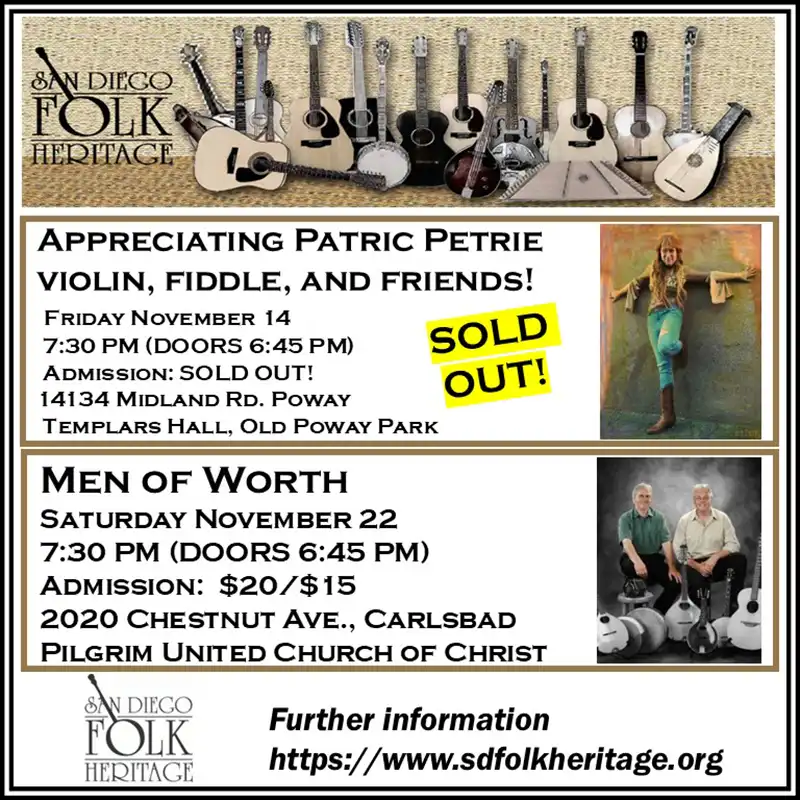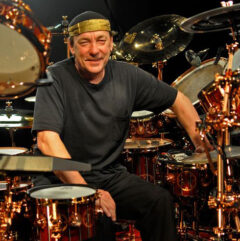Raider of the Lost Arts
RUSH
No, his mind is not for rent
To any god or government
Always hopeful, yet discontent
He knows changes aren’t permanent
But change is
––Neil Peart, “Tom Sawyer”
The death of acclaimed drummer and lyricist Neil Peart on January 7, 2020, after a protracted three-year battle with glioblastoma, marked the demise of not just one of rock’s all-time greatest percussionists, but also one of its most unique, trailblazing, and successful bands: RUSH. A case could be made for the 40+-year band’s end, actually having come five years earlier, when they retired from touring at Peart’s behest while still at the “top” of their game (those four decades as a paragon of live show prowess had long since begun to show in many ways), or even in the late ’90s when Peart lost his first daughter and wife to a car crash and cancer within a year of each other. But their multigenerational fan base still had cause to hope after the final 2015 show in Los Angeles, even if it only entailed more albums.
That flame has obviously now been extinguished. They said it themselves: no one in the band could be replaced, that RUSH couldn’t exist without any member of its triumvirate, and it’s true, like it was true for Led Zeppelin when John Bonham died in 1980, or for any other band losing its percussive lynchpin. There will be no replacing “The Professor,” one of the all-time greatest with his unparalleled embodiment of passion and precision, technique and tone, numerous innovations, undeniable indispensability (he also penned some of the best rock lyrics ever written––see above), and his wide-ranging influence not only on his own band’s sound, but also on legions of other bands and drummers across multiple generations.
There will be no replacing RUSH, either. They were one of the scant few groups with the “original” lineup intact (in quotes because Peart replaced founding drummer John Rutsey just after the debut album dropped in 1974) that didn’t implode from interpersonal or creative differences or otherwise succumb to the typical rock ‘n’ roll excesses of drugs and alcohol (though Peart was a lifelong drinker and smoker). They have sold over 40 million records worldwide and are fifth in their genre of consecutive gold and platinum awards, are inductees in both the Canadian and American Rock & Roll Halls of Fame, and are Officers of the Order of Canada. They accomplished all of this as industry outliers pedaling earnest, authentic music in one of the most critically lambasted genres––progressive rock––to an utterly devoted fan base of fellow nerds and outcasts who were willing to follow RUSH anywhere as the band experimented their way toward perfection—and with limited radio airplay (there’s a handful of older songs that have since embedded themselves on classic rock playlists, but that’s about it).
They went toe to toe with their original record company––and the music industry at large––and won the old fashioned way: with an indomitable work ethic that propelled them through decades of taking it straight to the fans with arduous touring, garnering them an incomparable reputation as a top-shelf live act during a time when that’s what mattered most, and yet was next to impossible to achieve (RUSH averaged one live album per every four studio albums in their prime, singlehandedly rescuing the format from last-ditch desperation and career retrospective purgatory, and cementing their must-see-live cachet for faithfully reproducing––and even surpassing––the sound of their studio albums). And after shunning them for most of their career, the mainstream finally came around during the 2010s, through appearances on television (The Colbert Report, numerous prime-time interviews, and the unforgettable 2013 Hall of Fame induction ceremony) and in movies (I Love You, Man and the excellent documentaries Beyond The Lighted Stage and Time Stand Still have gone a long way toward beneficial cultural ubiquity), and having finally earned the begrudging admiration of the pundits and naysayers, who had to at least hand it to the band for sticking around for so long.
Accessibly innovative, the still resonating product of a bygone era, and with humor and heart to spare, the world may never see the likes of RUSH again.
**************
Born just under a month apart in the summer of 1953, bassist/vocalist/keyboardist Geddy Lee (born Gary Lee Weinrib) and guitarist Alex Lifeson (loosely translated from Aleksandar Zivojinowic) met and instantly bonded as goofy, music-obsessed outsiders during junior high school in the Toronto suburbs. Both their sets of parents had immigrated to Canada after World War II to leave its horrors behind them (Lee’s had survived the Holocaust, though his father died of related causes when Geddy was barely into his double digits), and both were members of middle-class families running their own successful businesses. As a direct result, the seeds of fleeing heavy histories and a humble yet unflappable work ethic were sewn into the boys’ polite and silly Canadian DNA, and those would comprise the main ingredients in the recipe of their future success.
Having been born just prior to rock ‘n’ roll, that new music would end up being their salvation. They had both taken up guitar prior to meeting and started playing the music of their favorite bands together in high school in various permutations with several peers. Members came and went, and a trio eventually arose, rounded out by Lifeson’s neighbor and long-time friend John Rutsey on drums, whose brother dubbed them RUSH––arguably the best band name of all time. In a bold display of bliss-following self-belief, the trio dropped out of high school to focus on the band. To placate their worried parents and to supplement their initially meager gig income, they worked part-time in their family’s businesses.
Working ones’ asses off doesn’t amount to much unless one can attract the right kind of help from the right people at the right time and, as with any and every other successful group, RUSH managed to garner this kind of assistance exactly when they needed it; a fellow Torontan named Ray Danniels, eager to establish himself as a manager, offered his services to the fledgling trio, and he would take up the booking and promotional reins on their behalf for the duration.
Canada’s lowering of the legal drinking age to 18 just as they turned 18 meant they could now leave high school dances behind them and play the downtown Toronto club and bar circuit six nights a week, five or more sets a night, for more money, and within that crucible they got tight in every sense of the word––interpersonally bonded and musically locked in.
They recorded their self-titled debut late at night after some of those gigs, well into the significantly discounted morning hours to save money on studio time. Not hearing what they hoped for in the initial results, they took it in to Toronto Sound and got producing engineer Terry Brown involved in the subsequent polishing and rerecording. Brown would go on to become the fourth member of the band for almost 10 years and would coproduce RUSH’s most renowned album: 1981’s Moving Pictures.
For as many crucial pieces as they had managed to lock into place for such a young band, they initially couldn’t get a record deal to save their lives. Canadian labels wouldn’t touch them with a thousand-foot pole, and the American ones were as of yet a nonstarter. Their solution was a novel one at the time, and it would further their antiauthoritarian DIY precedent in the years to come: bypass the industry and release the album on their own label. The first pressing of 3,500 sold out quickly, with promotional copies making their way into the hands of Donna Halper of radio station WWMS in Cleveland, who would give the band their first buzz-generating airplay in the working class, Midwest hotbed of rock, and Mercury Records A & R man Cliff Burnstein, who got the band signed to a multi-album deal.
With their American foothold established—and on the eve of their first Stateside tour in the summer of ’74—the painfully obvious choice was made to replace John Rutsey; he was a straight-ahead rock-loving, original-lyric-withholding, juvenile diabetic who wasn’t jibing with Lee and Lifeson’s increasingly progressive-rock-leaning, heavy-touring proclivities. Auditions were held just weeks prior to the inaugural tour departure, with a handful of candidates stopping by for consideration. One such hopeful was a strange-looking, lanky local, driving a beat-up car with his drums packed in garbage cans, who was working in his father’s farm equipment store after a fruitless year spent trying to get discovered in England. First impressions aside, and with more talking than actual playing, the three found they had too much in common to ignore; same musical influences and aspirations, same favorite TV shows (Monty Python and The Twilight Zone), and similar senses of humor. But this kid’s sheer power and prowess on the trap kit was also undeniable, a jaw-dropping amalgam of Keith Moon and Bill Bruford that was perfect for what they wanted to do together. There was a palpable synergy at the atomic level, even in the vague sense that this already well-read, eloquent guy might be a more willing and able lyricist.
Two weeks later, Neil Peart played his first show with RUSH, opening for Manfred Mann and Uriah Heep in front of 11,000 punters at Pittsburgh’s Civic Arena. They never looked back.
**************
A three-piece band has a choice to make: they can either take a “less is more” approach, like their influential contemporaries the Police, or they can stretch out and fill all the extra space with deft orchestration and personal limit-pushing. RUSH chose the latter. Because of this, it is often a surprise when neophyte listeners discover that RUSH is comprised of only three people (Lee himself referred to one of the band’s chief ambitions as wanting to be “the world’s smallest orchestra”).
First, you’ve got Lee and Peart comprising one of the most dynamic rhythm sections that ever was. It almost seemed like they were both constantly soloing (they’ve won multiple reader’s polls in their respective instrument categories through the years), but because Peart was also the lyricist, and Lee the singer, they timed their fills around gaps in the vocals, or to accent them. The two were synched to a tee, with Lee crafting his bass lines to mesh as tightly as possible with Peart’s drum parts, composing separate and distinct melodies that often made harmonically expansive, aurally titillating inversions out of Lifeson’s chords.
In terms of reactive ingenuity, guitarist Lifeson was the MVP, painting mostly in default impasto broad strokes over Lee and Peart’s pointillist flurries, holding down roots as he “took one for the team.” But because his guitar was, at least initially, the only harmonic instrument in their mix, he compensated by developing one of the most eclectic and full-bodied chord vocabularies of any guitarist in rock, utilizing left-of-center voicings of upper harmony chords across as many strings as possible to fill the maximum amount of space in his instrument’s register. He also got a ton of mileage out of arpeggiation, picking through chords a note at a time to evince fresh, counter-melodic content from his supportive continuo. And during the ’80s, when Lee’s keyboards threatened to obfuscate his contributions, Lifeson found clever ways to work around the stifling synth textures (check out the almost jazz-like chord melodies he scattered all over 1984’s keyboard-laden Grace Under Pressure). Alex Lifeson is one of the most innovative guitarists around, and one of the most underrated because of how overshadowed he usually was by his overachieving bandmates.
This is not to say that Lifeson didn’t get any time to step out and shine. There’s no shirking on guitar solos in the midst of its golden age, and from the word go Alex was always ready with a balance of memorable quirkiness and technical prowess that perfectly fit the prevailing mood (to wit: his quintessential leads on Moving Pictures’ “Limelight” and Permanent Waves’ “Freewill”). Lifeson had a versatile palette, evincing strange squeals from the strings with pinch harmonics, or using his B.B. King vibrato to make notes sing. The ’70s saw Lifeson beginning to expand his effects arsenal to include phaser and chorus pedals, and he did a short stint on a Roland guitar synthesizer on 1978’s Hemispheres. In the ’80s he made the whammy bar his bitch and got neck-deep into reverb and delay effects, always in an effort to expand the sound, and to add something memorable while also managing to keep them current without pretense.
There had been several half-hearted discussions through the years about bringing in another band member on keyboards, but during their mid-’70s transitional period, RUSH decided they’d rather seek out the additional technology that would allow them to maintain their interpersonal chemistry as a power trio, and also leave room in their song arrangements to accommodate temporary switches to other instruments in the live milieu. The Moog company had come out with the Taurus I bass pedal synthesizer––modeled after an organ’s bottom tier, and similarly and most crucially, triggered with one’s feet––soon after RUSH started touring, and in between their fourth and fifth studio albums, Lee and Lifeson both added a set (or two, in Lee’s case) to their arsenal. The Taurus pedals were a game changer in terms of allowing them to add simple but wildly effective supporting textures, melodies, and bass lines while simultaneously playing their main instruments.
Lee also added a Mini-Moog in order to bring different lead textures to the proceedings. His synthesizer set-up would eventually expand to include more keyboards as well as sample banks that could be triggered live. And Lee and Lifeson also picked up double-neck guitars, the former’s with a bass on top and 12-string guitar on bottom (inverse of but modeled after Genesis’ Mike Rutherford’s similar Rickenbacker), which allowed Lee to add a second guitar while playing bass with his feet on select songs (most notably during the solo sections on fan favorites “Xanadu” and “A Passage to Bangkok”).
Meanwhile, Neil Peart expanded his already extensive kit to include a cornucopia of auxiliary percussion, such as chimes, glockenspiel, wood blocks, cowbells, etc. In the ’80s he would incorporate electronic drums into the fold, which some found feloniously irksome (Terry Brown was dismissed for this and keyboard-averse insubordination after 1983’s Signals) but was part and parcel of Peart’s and the band’s embracing of new technologies amidst the constant change of successive eras.
**************
Geddy Lee’s voice was the lynchpin of the entire operation. During the early years, it was a shrill, dental-drill shriek that cut over and through the band’s ruckus in its operatic preciseness, polarizing the fans and critics, and weeding out the posers, leaving only the die-hards that would follow them off a cliff. Die-hard because the fact that journalists and DJs were so turned off by Lee’s vocals––as well as RUSH’s music––gave loyal audiences a sense of exclusivity, that RUSH were underdog champions who belonged only to them no matter how many records or concert tickets they sold. Because of their fans’ unwavering support, and their near-constant touring in the absence of any significant FM radio airplay, RUSH were free to write and release whatever they wanted, knowing it would sell enough copies to keep the label happy and sustain their career. (Nevertheless, it’s no coincidence that their commercial appeal skyrocketed as Lee began to cut down on the shrieking and lean into the still crisp yet creamy low end of his register…and after all the criticism dust has settled, one is hard-pressed to deny that Lee has one of rock music’s all-time greatest voices, with an even timbre throughout his extensive range.) In that sense, it could be posited that RUSH invented crowdfunding.
Hindsight lends a transparent lens to RUSH’s aesthetic adaptability; as fervently and defiantly as they stuck to their creative guns, it’s astounding how adept and flexible they were at changing with the times to remain relevant on their own terms without selling out, how willing and able they were to be inspired and influenced by their contemporaries, and how keen they were to seek out and adopt new technology. No two albums sound exactly alike, not even sequential ones, as there is constant discernable growth evident while they strived to surpass and subsequently set new goals for themselves. The Zeppelin Jr. hard rock of the first album slowly integrated distinctive progressive elements over longer-form works as they moved through the ’70s, then new wave and reggae influences propelled them into and through the keyboard-heavy, shorter-songed ’80s, followed by the return to a basic, raw yet still progressive power trio sound that dovetailed with the ’90s grunge movement, finally evening out to something resembling a static, alloyed balance from then on.
RUSH’s defining moment came in 1976-77, whereupon after overreaching with their almost-but-not-quite-there third-album flop, Caress of Steel, with the resulting tour having been aptly named “Down the Tubes” from poor ticket sales at progressively smaller venues, RUSH found themselves with one album left on their contract and at odds with Mercury execs, who were at their wit’s end with RUSH’s creatively overextended commercial failure. In this pivotal moment, when it would have been so easy to kowtow to the pressure, they had the greatness of mind––and the best kind of gumption––to rally for their freedom, get angry, and produce one of the finest albums of their career: 2112. With its fully realized, hard-hitting, concise, future-dystopian title track taking up all of side one, it was an implicit middle finger to the Mercury pearl-clutchers, a grand statement of intent that Lee, Lifeson, and Peart would rather go out in a blaze of glory and go back to “normal” jobs than compromise their aesthetic ideals.
It was the ultimate gamble, the craziest of Hail Marys, and it paid off in spades; their fans fell head over heels for the raw new LP and returned the favor with exponentially increased record sales and concert attendance (the well-timed release of the beyond superlative double live album, All The World’s a Stage, just as the format had become a sure thing thanks to Peter Frampton, former tour-mates KISS, etc., gave 2112’s sales an uptick), which in turn mollified the suits at Mercury, who would subsequently re-sign the band and leave them alone from that point on. 2112 not only bought RUSH their artistic autonomy, but it also marked the undeniable turning point where they finally left their influences in the dust and claimed an identifiable sound for themselves as they steered confidently into the future.
**************
Just as they were 50 years ago, RUSH would be derided if they were coming up today (it’s virtually impossible to imagine these three intensely private men posing for Instagram selfies or posting video updates on Facebook). The main difference now, though, is in the lack of urgency to be found in organic contemporary bands trying to make it in an inorganic era peppered with soulless solo artists and ersatz retro kitsch. Education-hindered, excessively high cost of living, yet mollycoddled Millennial and Gen-Z childhoods coupled with a now anemic, uncooperative, and unimaginative music industry have reduced our youth to dreaming through screens, escaping into video games and the social-media-driven internet to live out their fantasies instead of going through hell to pursue the life they would rather have in this overcrowded and all but prohibitive crisis reality. Individual liberty has eclipsed collective order, and that doesn’t bode well in the sense that everyone who has become successful has required long-term help from––and collaboration with––others.
As Boomers, RUSH came up in the postwar era of “we,” as opposed to the “me,” age we have been in since the ’80s. Today’s bands don’t have the interpersonal cohesion or focus to stick it out for an entire career with the same cohorts in what passes as the modern music industry, and even with a hot boy band like Korea’s BTS, there’s the pre-established precedent that they will inevitably fragment, and one or two of the more ambitious ones will step out and go solo in the spirit of Harry Styles and Justin Timberlake, with no reunion look-backs.
RUSH have been asked many times about the secret of their longevity, and their answer was and is always the same: when it comes down to it, notwithstanding being in total alignment with their professional goals and work ethic, they enjoyed each other’s company immensely. They were constantly laughing and goofing around, but they also knew when to back off and respect each other’s space if one of them had had enough ribbing. Two against one isn’t fair, so each of the three had veto power if there was anything off about the music or anything happening within the band’s management they couldn’t get behind. And each member got an even third of the spoils, no matter the real or imagined extent of the respective individual’s contributions on any particular song. It was all for one, one for all, not every man for himself like it is now.
They never forgot how lucky they were to have found and to be in such a fulfilling, enjoyable calling together, and this blossomed outward in their long-term professional collaborations with the extended family of their stalwart road crew, as well as crucial satellites like cover artist and occasional instrumental cameo provider Hugh Syme, who designed some of the most iconic album covers around with the band’s input. Indeed, it seems as though the opportunities to collaborate with other like-minded specialists on a long-standing basis have all but disappeared in these troubling, hunkered-down times when dwindling revenue shares go mostly to thinly spread DIYers, jack-of-all-trades svengalis, and streaming service grifters.
**************
Alex Lifeson has kept himself busy since Neil Peart’s passing, having entered into a new collaboration with the band Envy of None. For better and worse, he is barely recognizable on their new album, his guitar parts reduced to a digital wash in the midst of a wispy mix dominated by breathily emotive female vocals. One is happy to see Lifeson pressing onward, trying new things with new coconspirators after decades of what must have been at least occasionally stultifying faithfulness to his RUSH cohorts, but after having established such a distinct voice on the instrument, and after lamenting at great length over almost having drowned in Geddy Lee’s keyboards, it’s a bit off-putting to hear his guitar sounding more like a synthesizer than the thing of beauty one remembers from RUSH’s 19 studio albums and countless tours.
Neil Peart is survived by another wife and young daughter, having started over in Los Angeles in the early ’00s, and also, as with RUSH, by boatloads of friends and fans who still remember a recent time when RUSH were one of the sole torchbearers for so many exalted aspects of an era fading inexorably into the past.









